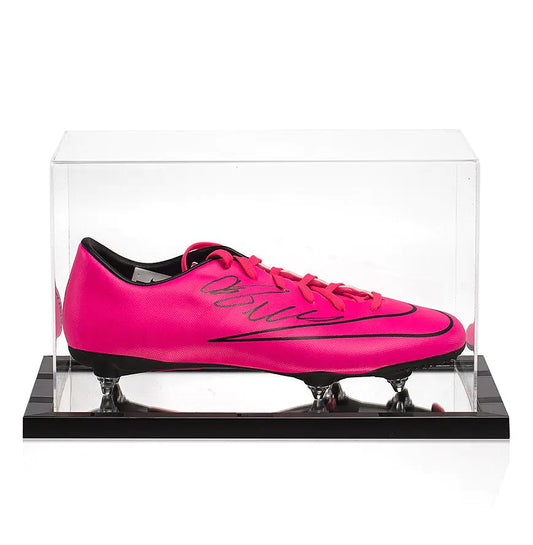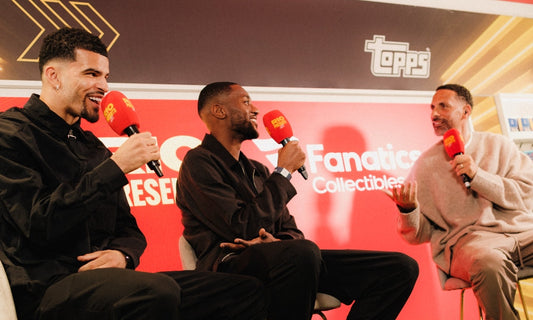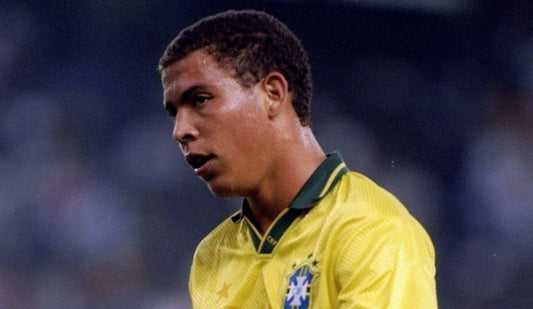Starting a Card Collection Today

Starting a Card Collection Today
Like many kids in the 1990s, I collected football stickers. I never completed my albums.
Damn you Panini Ligue 1 Fabrizio Ravanelli #167! But my collector journey really started at a Target in 2002.
I came across NBA trading card packs, and they changed my life. The quality felt different: the attention to detail, the graphics, the fact that they came in different collections.
I was hooked, and never stopped collecting.
I started with basketball and baseball, then moved to football a few years ago.
I have made money, I have made mistakes, I have made friends, but most importantly I have acquired knowledge that I will humbly share with you through this article series (and maybe more).
It's really up to you to shape your collection - and there are no "yes or no" answers in the trading card world. Let's see where you can place the cursors by asking ourselves 3 questions.
Why Are You Collecting?
You could be starting a collection for a number of reasons:
Purely Collecting - Collecting cards of players/teams/nations you like, with the ambition of keeping these cards with you indefinitely. In the hobby, we call that "building a PC"; PC stands for "Personal Collection".
Investing - You could collect cards to make a profit, which could be short or long-term. In that case, you would be building a portfolio of cards by investing in several players - which, in theory, should somehow hedge your risk. Bear in mind that investing in sports cards/TCG is quite risky.
Flipping - This means you would buy a card and immediately sell it. That is possible because you could either anticipate a player to perform well soon, buy low, or buy a sold-out product.
Dealing - This means you would buy entire collections and sell them off piece by piece.
My advice to start, no matter which way of collecting you want to take—or a mix of ways—is very simple:
Take some time to understand the collections, the cards, and the market. Never buy what you don't know.
This might sound very basic, but it is a key aspect of succeeding in either collecting, investing, or dealing. We hope that with this series, you'll be able to know the hobby better!
Which Cards?
There are A LOT of cards available. A player like Lionel Messi has 7,000+ cards or stickers in existence, so there is a lot to see!
A great way to get to know the recent collections is to watch breakers (people that open large amounts of trading card boxes for people that buy in shared openings), and get a good grasp of what recent cards are like.
Then, if you're collecting: go for what you like the most! Players, teams, or specific sets. What you love is what you collect, and vice versa!
If you're investing, take time to understand the mechanisms of the market. It is volatile and seasonal.
Changes are heavily based on how the underlying sport is evolving.
Not understanding all these variables will surely lead to bad investments.
For example, there usually is a premium when you are the very first buyer of a specific card.
A 2022-23 Prizm Erling Haaland numbered to 50 will likely be sold several times, but the first time is almost always the most expensive. If the card is not super rare, be patient!
Which Collections?
There are 3 main types of collections:
Low end - Collections that are fairly accessible ($40-$100 per box), with large print runs and a lower probability of hits (a hit is a rare card, e.g., an autograph, a relic, or a very limited-run card).
Mid-End - Collections that are a little less accessible ($100-$400 per box), with a slightly less large print run and hits that are present in every box.
High end - Collections that are expensive ($400 up to $10k a box), with a low print run and almost exclusively hits.
Within these collections, some are more appreciated by collectors than others, for example, Prizm and Select.
There is no real reason behind it, except maybe the fact that they are usually sets that are popular in all sports; and their design is usually consensual.
Some specific years (2014 Prizm World Cup, 2017 Topps Chrome in football) are very popular because they either are breakthroughs or contain a great class of rookies (new players) Be sure to know all the collections, and go after the one you like the most!
With What Budget?
The most important rule is - Don't spend what you can't afford. This applies to collecting, investing, or anything else.
There's fun to be had at every budget level! Look out for a future article in this series on "how to ball on a budget."
How to Take Care of Your Cards
Protecting your cards is key. Here are some storage solutions offered by various companies:
BCW - (https://www.bcwsupplies.com/) They offer a variety of storage solutions, including shoeboxes specifically designed for trading cards (https://www.bcwsupplies.com/shoe-storage-box-1600-cards)
Ultra Pro - (https://ultrapro.com/)
They offer binders, penny sleeves, top loaders, and one-touches for different card sizes and values. Here are some examples:
Binders - https://www.amazon.com/TopDeck-Portfolio-Trading-Storage-Sleeves/dp/B09MZPKBZY
Penny Sleeves - https://ultrapro.com/collections/card-sleeves
Top-loaders - https://ultrapro.com/collections/sports-and-memorabilia-toploaders
One-touches - https://ultimateguard.com/en/Collectibles/Magnetic-Card-Case/UGD011032/
Here's a breakdown of how I organise my collection (you can adjust this to your preference):
Base Cards - Store them in shoeboxes.
Numbered Cards/Rare Base Cards - Sometimes store these in binders, sometimes in penny sleeves and shoeboxes.
Relic/Autograph Cards up to £50 in Value - Always keep them in penny sleeves and top loaders for added protection.
Ultra Rare Cards - Store these in one-touches for maximum security.
Two last things!
Card Sizes - Make sure you buy the right size penny sleeves and top loaders for your cards. Different card sizes require different protection (https://www.bcwsupplies.com/)
Enemies of Cards - Keep your cards away from sunlight and tobacco smoke, as both can damage them over time.
By following these tips, you can ensure your cards stay in pristine condition for years to come.
This concludes the first part of our series on starting a trading card collection.



